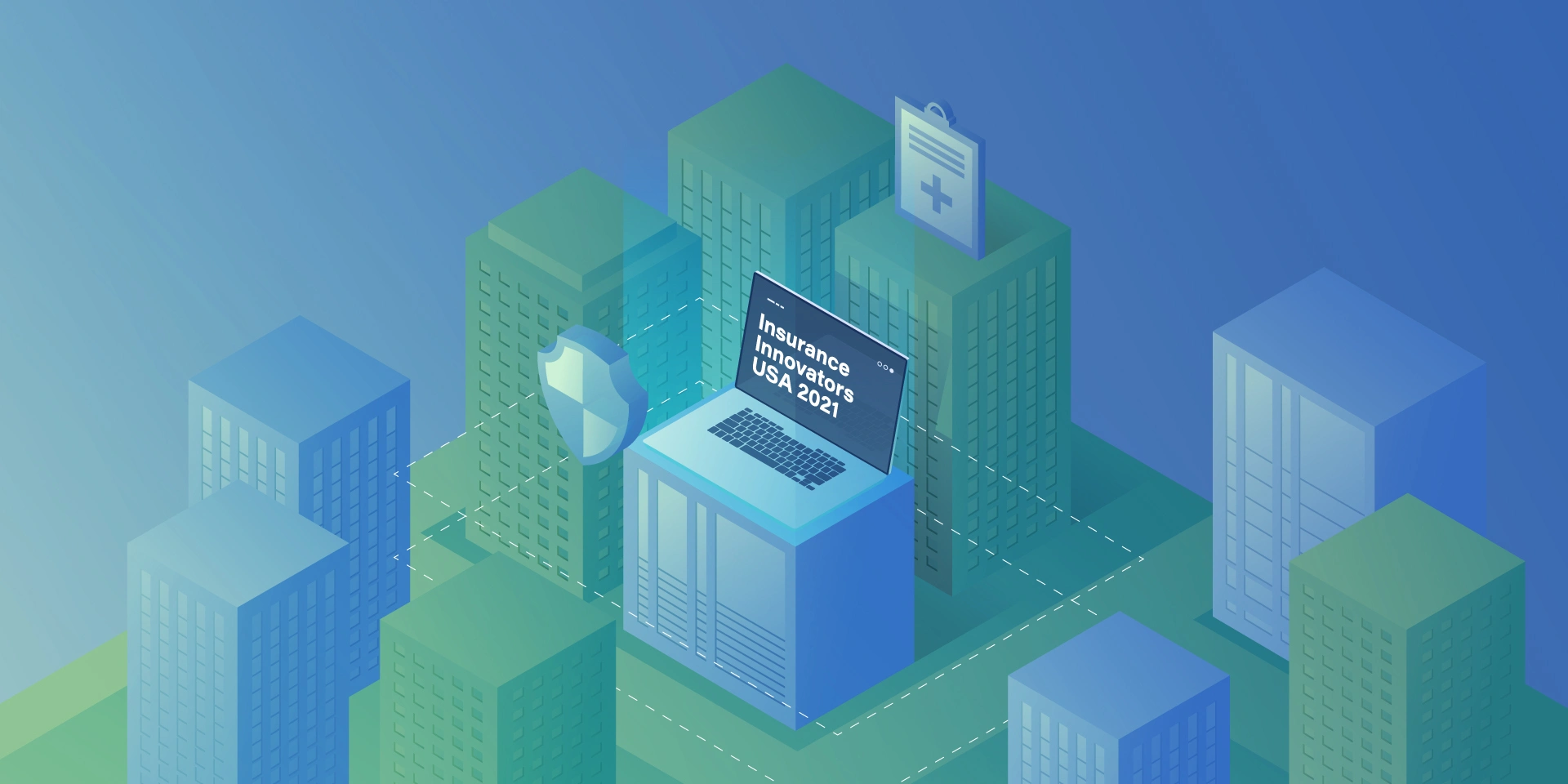Key Insights from Insurance Innovators USA 2021

Insurance Innovators USA 2021, organized by Market Force Live, provided us with engaging sessions and insights into trends shaping the industry. We sum up key points and share our thoughts regarding commonly discussed predictions.
External sources of innovation
In a traditional approach, innovation was supposed to be driven by the internal capacity of an organization. So, achieved goals in innovation and R&D used to be an internal cost/benefit relation. That paradigm has started to shift in recent years and was clearly accelerated by the unexpected pressure from COVID pandemic.
Insurance companies understand the importance of collaborating with external experts to drive innovation. Both InsurTechs and technology vendors they choose to collaborate with, provide them with a fresh take on your organization and processes, and that leads to unlocking innovation. Staying open-minded, monitoring what the market has to offer, and evaluating new products and services enable organizations to be agile and competitive.
Amazon is the new customer experience baseline
The insurance industry drags behind many other industry sectors in the digital transformation. But the rise of customer-centric technology providers encourages the industry to reconsider its stance. Until recently, customers tended to remain with their providers for long periods because it was easier to do a renewal than to shop for a policy and face all the hassle.
Now that the InsurTechs are here, insurance companies face the same dilemma the retail industry has a couple of years back. They either adopt the customer-centric, digital approach to servicing their customers, or they will lose market share. The days when customers went to see their insurance agents are mostly gone now. In the age of Amazon, insurance companies must offer a buying experience and a personalized relationship that will make finding, buying and renewing insurance simple and pleasant.
Covid-19 accelerated virtual inspections
Prior to Covid-19, only the largest companies advanced in their digital transformation journey leveraged virtual inspections. As no one expected that a global pandemic would hit and force everyone to retreat to virtual channels, they mainly used virtual inspections to enhance productivity and to speed up claims processing. Companies like Allstate that have implemented virtual inspections back in 2016 (you can read here how Grape Up helped Allstate build their solution) have simply scaled up the teams and made it their no.1 channel of communication.
For companies that have not considered VI before, it took some time to launch the virtual inspection capability, but fortunately, with SaaS solutions available, the adoption was relatively easy. What seems to be certain at this point, according to the conference panelists, is that the virtual inspections are here to stay. Even with the pandemic gone and social interactions resumed, it is unlikely the insurance companies will want to go back to in-person inspections, and more importantly, that the customers will.
Embedded insurance is growing
Embedded insurance is one of the hot topics of 2021 that may well change forever the adage saying insurance is something a person needs rather than wants. With the development of connectivity, IT architectures, APIs, and digital ecosystems, embedded insurance has the potential to provide a one-stop-shop experience for customers buying new products. The embedded insurance model installs the coverage within the purchase of a product. That means the insurance is not sold to the customer at some point in the future but is instead provided as a native feature of the product.
That way a new smartphone is covered for theft and damage right from the get-go. For insurance companies, this new way of doing business promises a variety of new opportunities to develop, enter, and target insurance segments they have not operated in before.
From the technology standpoint, it seems clear that all these trends will drive insurance companies to further develop their cloud and data capabilities. The ability to perform operations on data in near real-time will be the key to sustaining and growing the customer-centric approach that is necessary if carriers want to remain competitive.
Check related articles
Read our blog and stay informed about the industry's latest trends and solutions.
see all articles

Personalized Finance as a Key Driver Leading Financial Services Industry into the Future
Read the article



